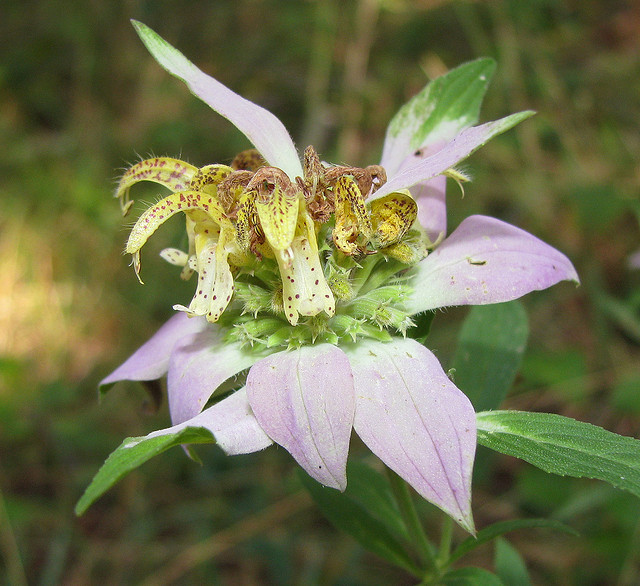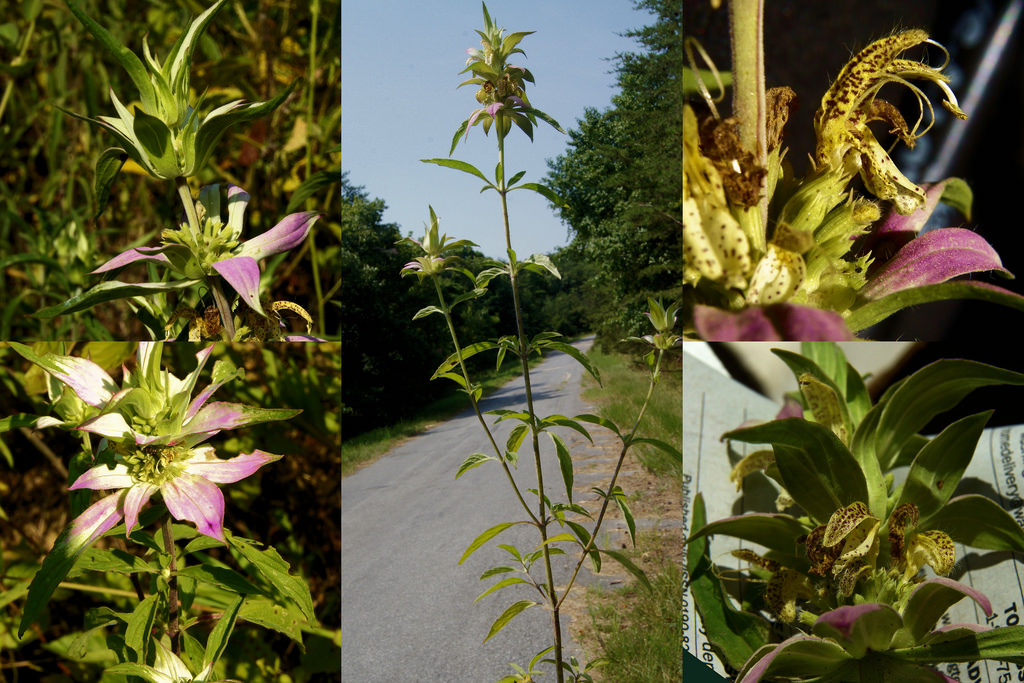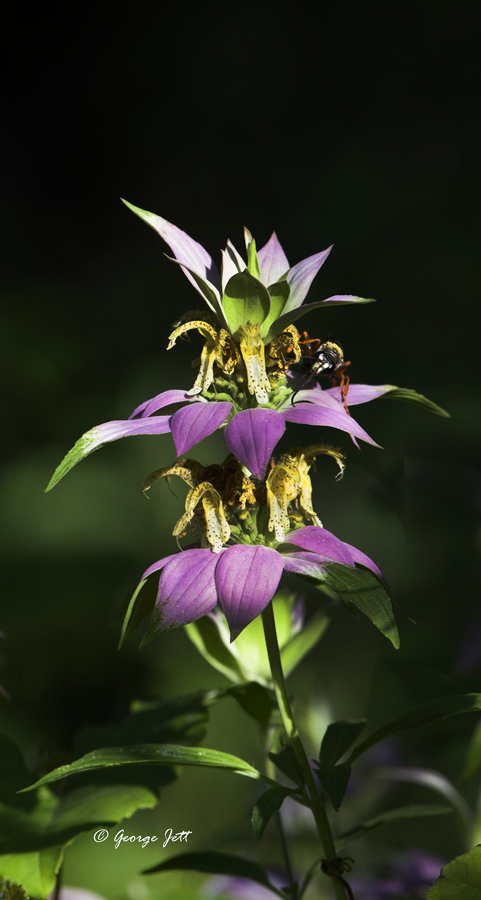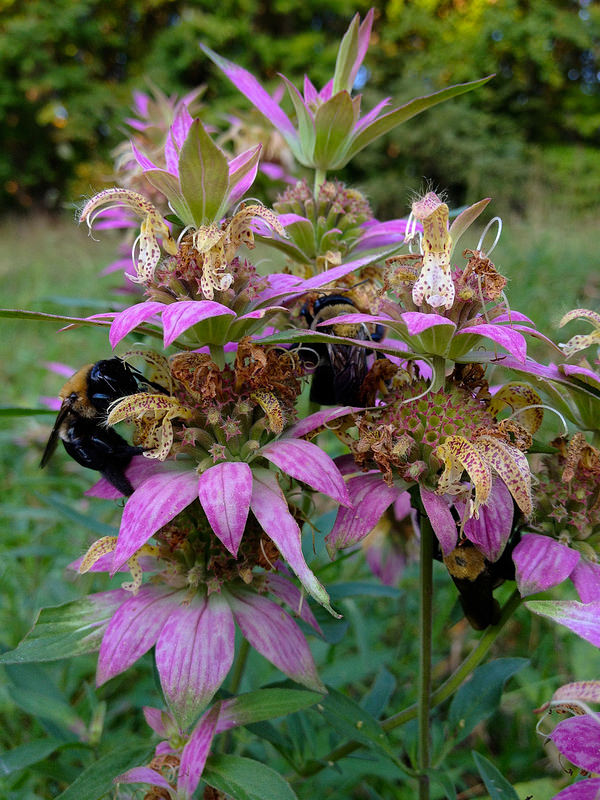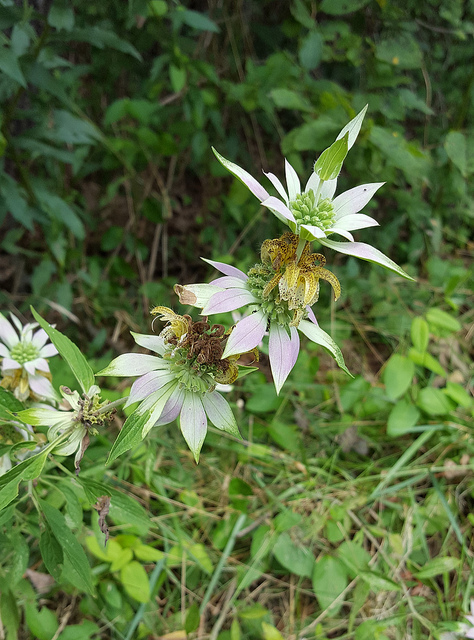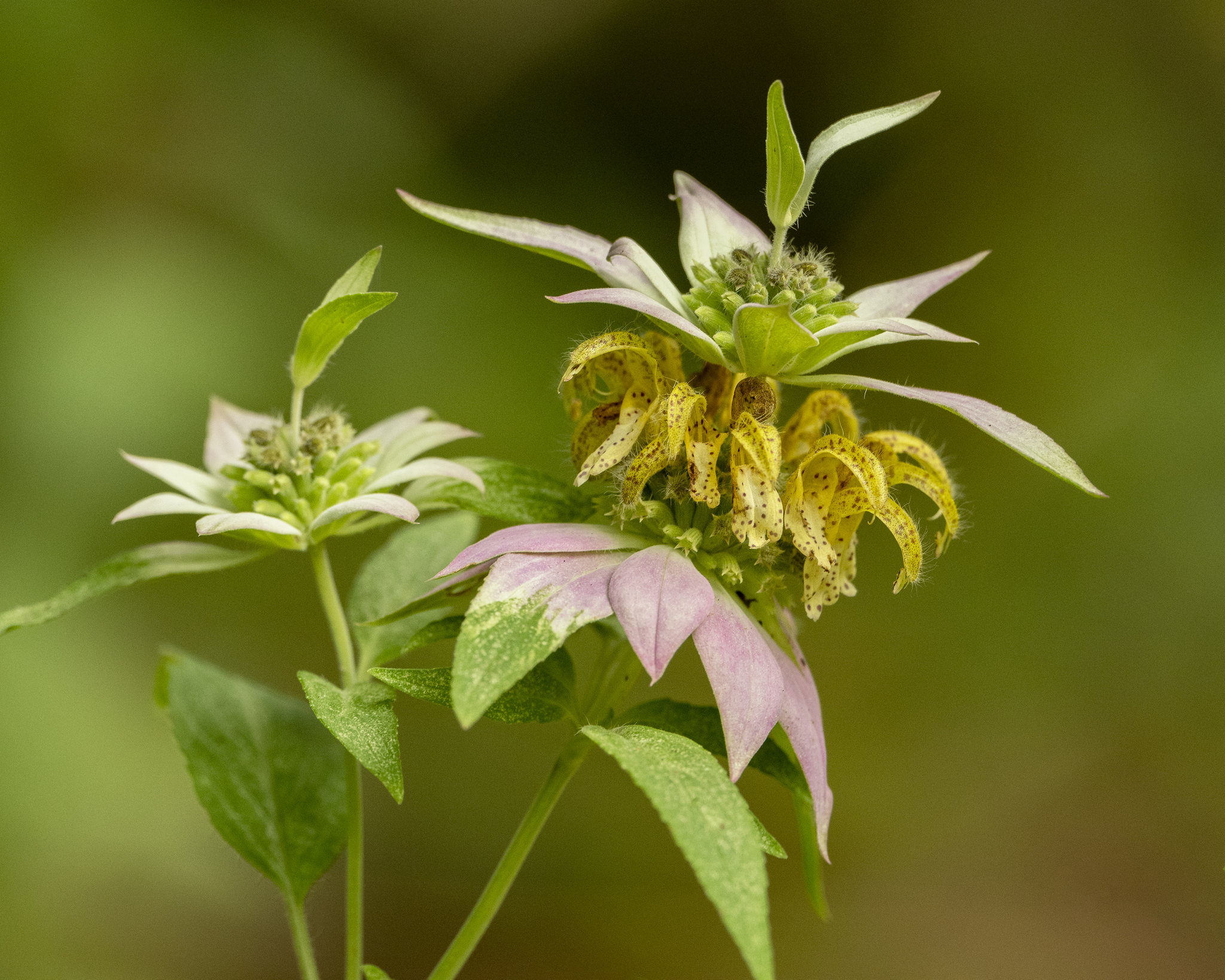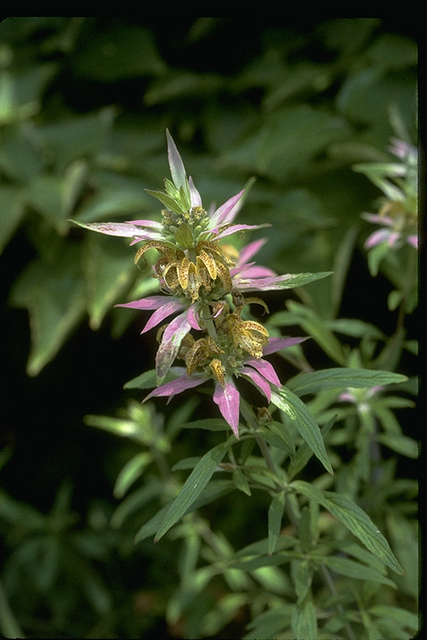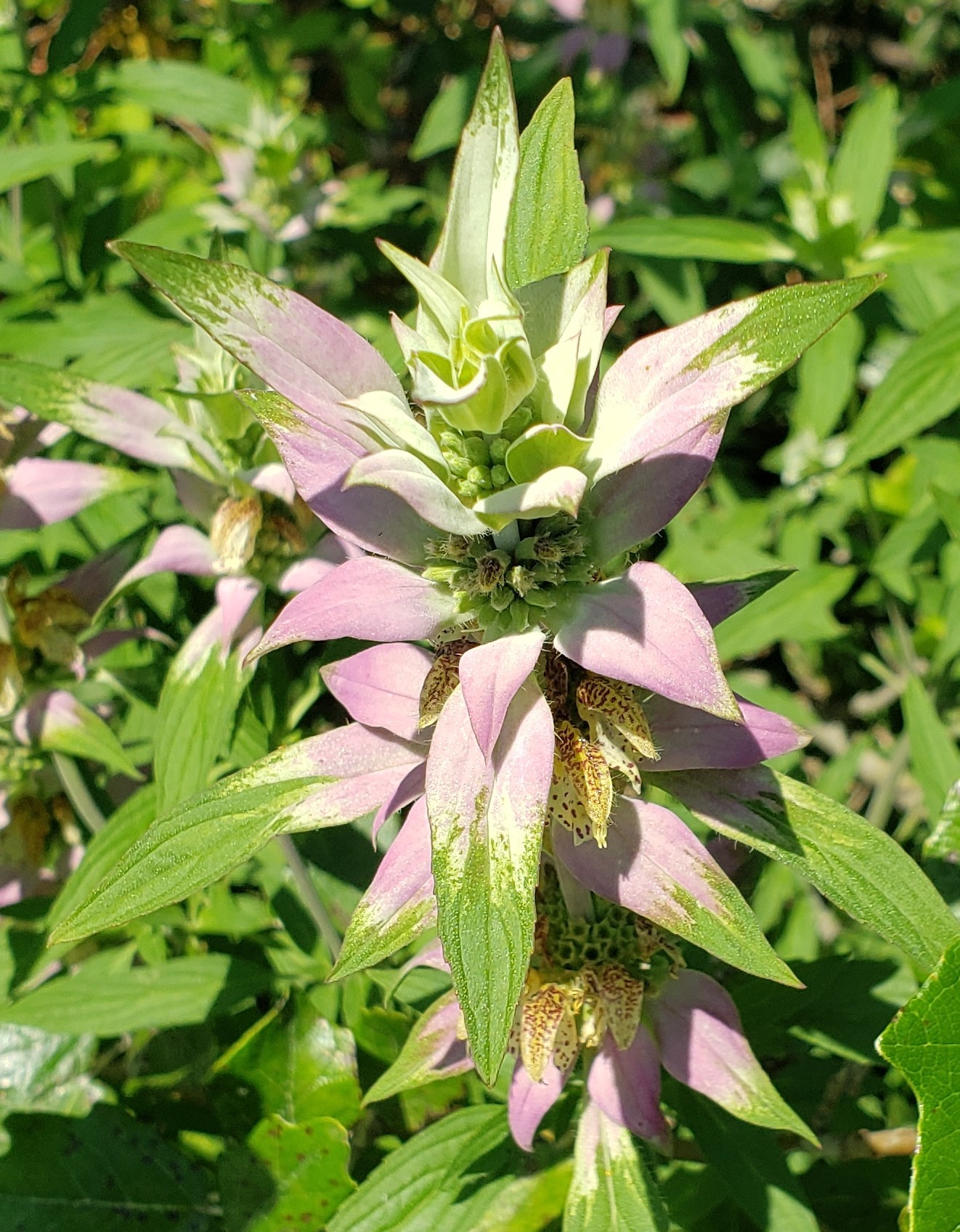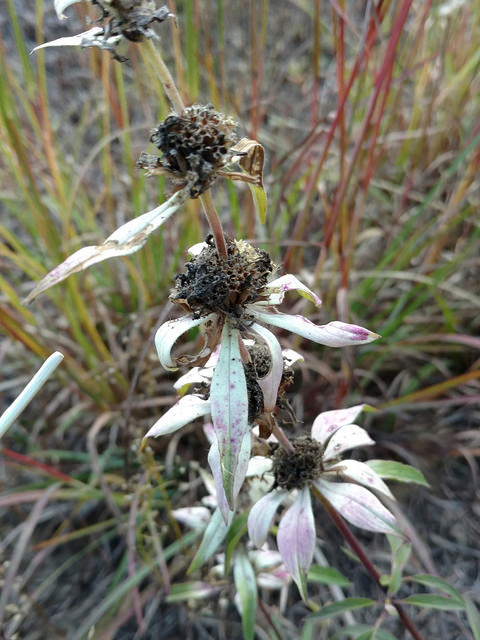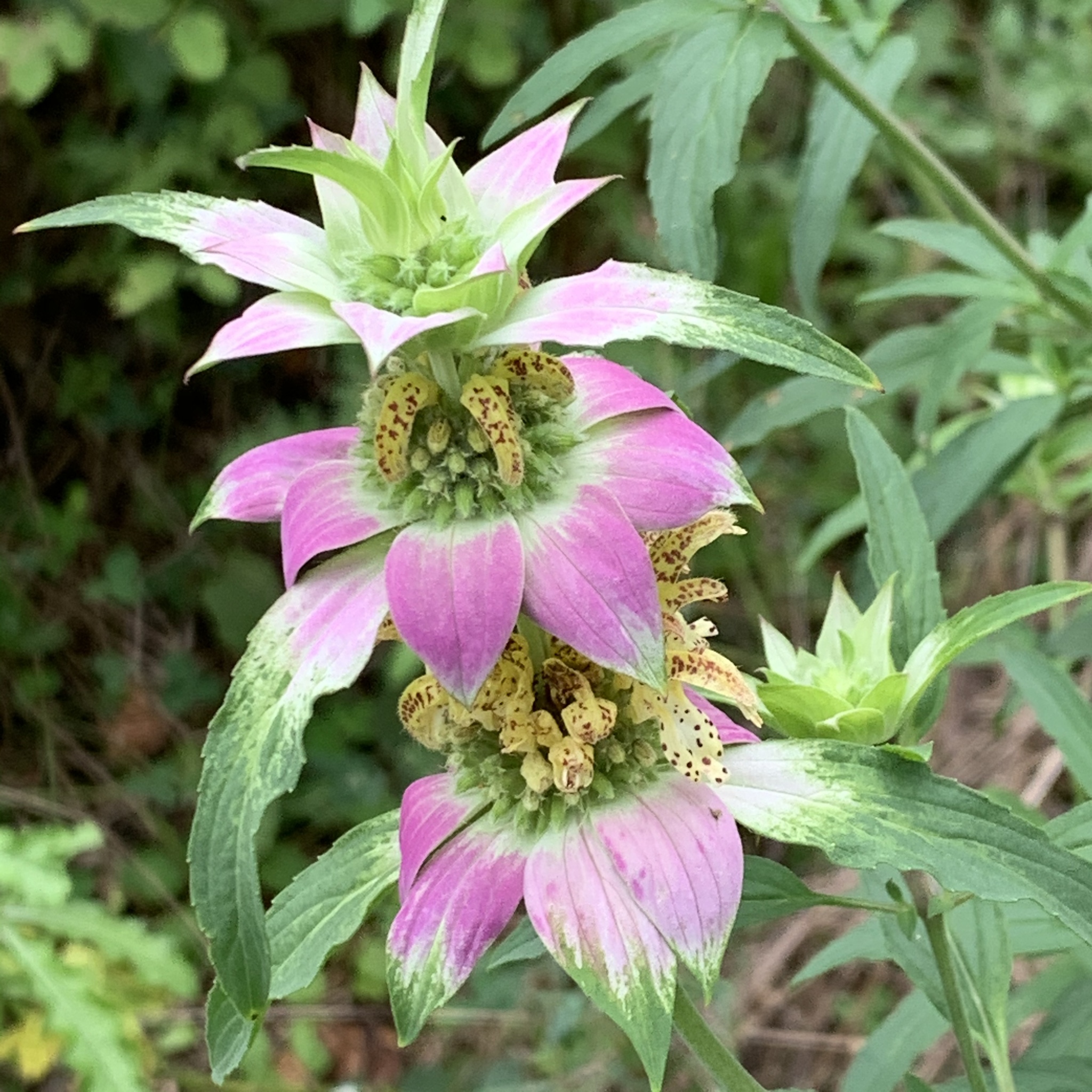Map Snapshot


















339 Records
Seasonality Snapshot
Source: Wikipedia
| Monarda punctata | |
|---|---|

| |
| Scientific classification | |
| Kingdom: | Plantae |
| Clade: | Tracheophytes |
| Clade: | Angiosperms |
| Clade: | Eudicots |
| Clade: | Asterids |
| Order: | Lamiales |
| Family: | Lamiaceae |
| Genus: | Monarda |
| Species: | M. punctata
|
| Binomial name | |
| Monarda punctata | |
Monarda punctata is a herbaceous plant in the mint family, Lamiaceae, that is native to eastern Canada, the eastern United States and northeastern Mexico. Common names include spotted beebalm and horsemint.[1]
Varieties
[edit]- Monarda punctata var. arkansana (E.M.McClint. & Epling) Shinners
- Monarda punctata var. correllii B.L.Turner
- Monarda punctata var. coryi (E.M.McClint. & Epling) Shinners
- Monarda punctata var. immaculata (Pennell) Scora
- Monarda punctata var. intermedia (E.M.McClint. & Epling) Waterf
- Monarda punctata var. lasiodonta A.Gray
- Monarda punctata var. occidentalis (Epling) E.J.Palmer & Steyerm
- Monarda punctata var. punctata
- Monarda punctata var. villicaulis (Pennell) E.J.Palmer & Steyerm[2]
Description
[edit]It is a thyme-scented plant with heads of purple-spotted tubular yellow flowers above rosettes of large white- or pink-tipped bracts. The plant contains thymol, an antiseptic and fungicide.[3]
Unlike the most familiar Monarda species that have a single flower head on a stem, Monarda punctata has flowers that are stacked up the stem with bracts radiating from the stem, under each flower. Varying in color from light pink to white, the bracts are ornamental longer than the flowers, whereas the flowers (yellow with brown spots) are visible only at close range.[4]


Ecological value
[edit]Monarda punctata attracts pollinators in great numbers, especially wasps. Among the wasps that it brings to the garden are beneficial predatory wasps that control grubs, pest caterpillars, and other harmful insects.[4]
Uses
[edit]It was historically used to treat upset stomachs, colds, diarrhea, neuralgia and kidney disease.[citation needed]
References
[edit]- ^ a b "Monarda punctata L." Germplasm Resources Information Network. Agricultural Research Service, United States Department of Agriculture. Retrieved 2011-10-10.
- ^ "Monarda punctata". Integrated Taxonomic Information System. Retrieved 2011-10-10.
- ^ Turner, Matt (2009). Remarkable Plants of Texas: Uncommon Accounts of Our Common Natives. Austin: University of Texas Press. pp. 241–243. ISBN 978-0-292-71851-7.
- ^ a b "Monarda punctata - Mt. Cuba Center". Mt. Cuba Center. Retrieved 2017-01-27.
External links
[edit] Media related to Monarda punctata at Wikimedia Commons
Media related to Monarda punctata at Wikimedia Commons Data related to Monarda punctata at Wikispecies
Data related to Monarda punctata at Wikispecies- Monarda punctata in the CalPhotos photo database, University of California, Berkeley
- http://mtcubacenter.org/trials/monarda/monarda-punctata/

